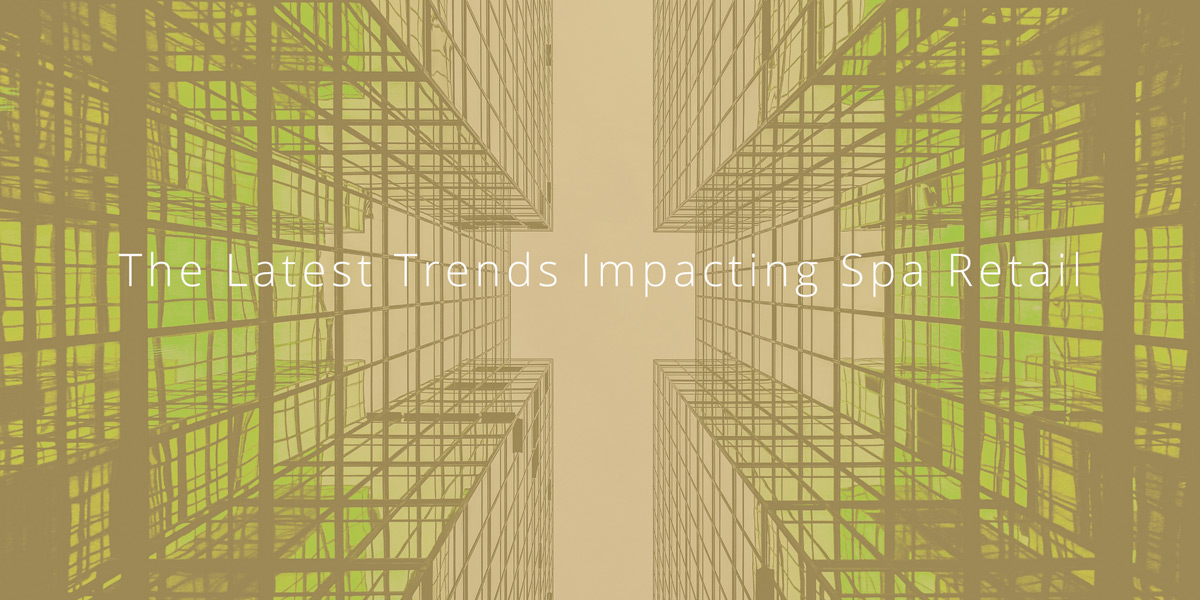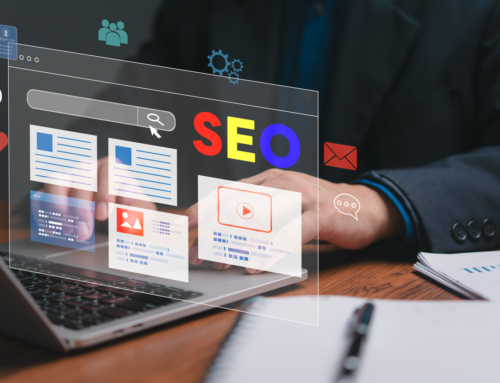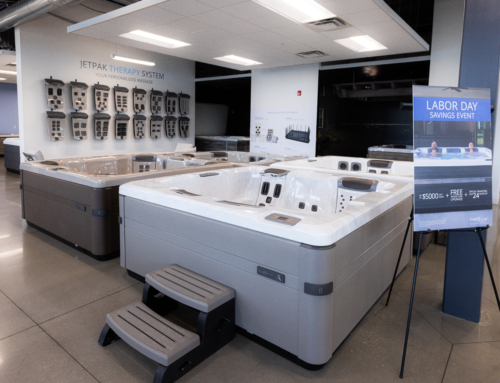Have you done anything new in your spa business this year? Are you keeping up with current retail trends?
New trends appear as fast as new technology is developed, and retailers who aren’t taking advantage of these new opportunities risk falling behind the competition. Total Retail advises spa retailers to focus on these three trends: the Internet of Things, customer experience, and mobile shopping.
Internet of Things
What is the Internet of Things? IoT “utilizes a network of devices equipped with sensors, software, and other electronics that enable them to connect, exchange data, and function as an intelligent system.” Total Retail suggests that you “think about tablet-wielding sales associates, mobile shopping apps with in-store features, mobile-connected digital signage, and even smart […] kiosks.”
Sensors, RFID readers, cameras and other IoT solutions are the future of retail and ecommerce.
Pretty much any product has the capability of being an IoT device with the right chip. If it’s a stand-alone device that connects to the internet and you can control or monitor it remotely, it’s an IoT device. Let’s look at some IoT solutions and what they offer spa retailers.
Beacon Alerts
Bluetooth Low Energy devices are placed in or near stores and programmed to send “beacons” in the form of advertising, coupons, or sale promotions to the smartphones and tablets of people in or near the store. People who may be “just browsing” are more likely to make a purchase or request more information on a product when they receive a beacon while they are in or near the store.
Shopper Mapping
Sensors placed throughout the store allow you to “map” your customers’ shopping paths in the store and where customers spend the most time in the store. By monitoring the volume of traffic walking by the store and traffic coming into the store, you can evaluate advertising efficiency, store set-up, product placement, and much more.
Smart Signage
Interactive digital displays help customers navigate your store and your products. Use them for in-store advertising, directing customers to desired products, and providing product information. By using customer data gathered from sensors and hardware throughout the store, you can even program some digital signs to offer customer-specific advertising.
Smart Shelves
Imagine if your shelves could alert you when a product is out of stock, tell you a product is out of date or let you know a product is mis-shelved. Smart shelves do just that, making inventory tracking easier and ensuring shelves are always stocked.
Sensors, RFID readers, cameras, and other IoT solutions are the future of retail and ecommerce. The ability to track and analyze real-time customer data, in-store and online, gives you the information you need to create a better customer experience.
Customer Experience
How do you know you’re providing a good customer experience in your spa store? Hit the internet because a Medallia report found that online reviews and ratings are three times more influential to millennials than they are to older generations.
There's very little you can sell that can't be gotten elsewhere. Focus instead on how you sell what you sell.
Customers rarely address satisfaction or dissatisfaction directly to businesses anymore–instead, they take their comments to the internet via online reviews, ratings, Facebook posts, and Twitter raves. Gone are the days of letter writing and telephone calls; welcome to the world of instant results. Today 81% of consumers read business ratings and reviews, so you need to create an experience that leads to positive comments, reviews, and ratings.
Pacific Consulting Group conducted a study which shows employees who are engaged in defining or creating the customer experience produce a better customer experience. Good customer experiences start with engaged employees, and that engagement consists of four elements: self-motivation, ability, support, and knowledge.
Self-Motivation
Employees must want to provide a great customer experience. In the PCG study, 83% of self-motivated employees put the customer first ahead of business concerns, and 82% genuinely enjoy customer interactions.
Ability
Employees say their ability to deliver great customer experience increases when they aren’t restricted by ‘cost-cutting’ and budgetary limitations. Of those who consistently provide a good customer experience, 62% never feel limited by budgets or schedules when it comes to customer experience.
Support
When employees feel supported by management, they are more motivated to deliver a quality customer experience. Of the employees who, according to PCG, are top CX performers, 87% say they receive active encouragement from their managers.
Knowledge
Employees who know and understand the business’s customer experience vision tend to deliver better customer experience. In fact, 78% of employees at top CX companies say they have a clear understanding of the employers’ CX strategy.
In a nutshell, creating a great customer experience means making sure you have a clear CX strategy that your employees understand. It means providing the opportunity, and supporting their efforts without budgetary restrictions, to deliver quality customer experiences.
Mobile Shopping Apps with In-Store Features
Customer experience carries over into the mobile app arena. Mobile access to your business is more than just making sure customers can access your website on their tablets and smartphones. Did you know that 60% of consumers prefer using mobile apps to traditional store websites? They like the convenience of immediate access, the feeling of brand connection and the in-store options that help them navigate brick and mortar businesses. Mobile-users are equally happy with specific retailer apps and third-party apps.
Providing a great store locator, giving access to real-time in-store inventory and having a well-executed local SEO plan,
The good news is that it’s easy and cost effective to use a third-party retail app. Third-party apps offer:
- Wider audience: reach beyond users of a branded store app
- Innovation: allow you take advantage of more technological advances like cross-platform functionality and smarter beacons
- Incentives without discounts: the app itself offers rewards so you don’t have to offer discounts
The beauty of third-party apps is that they take care of the user experience for you whereas retail consumer apps require you to design, develop, and maintain a positive user experience. According to Marketing Land, “90% of smartphone owners use their phones while making purchasing decisions in a brick and mortar store.” Considering that 197 million mobile apps were downloaded in 2017, this is a trend retailers need to take advantage of.
Takeaways
Doug Stephens, Retail Prophet founder says, “There’s very little you can sell that can’t be gotten elsewhere. Focus instead on how you sell what you sell.” Taking advantage of mobile technology and the Internet of Things allows you to give your customers a multi-channel shopping experience.
Concerning IoT, Retail Geek founder Jason Goldberg emphasizes the importance of digital activities such as “providing a great store locator, giving access to real-time in-store inventory and having a well-executed local SEO plan,” and says they “are amongst the highest value digital activities for any brick and mortar retailer.”
Stephens also suggests that you “completely differentiate your customer experience and make sure it’s truly remarkable.” Those are the experiences people share with their friends–the ones that lead to positive online reviews and ratings. So, how IS your spa business keeping up with these three retail trends?









Leave A Comment